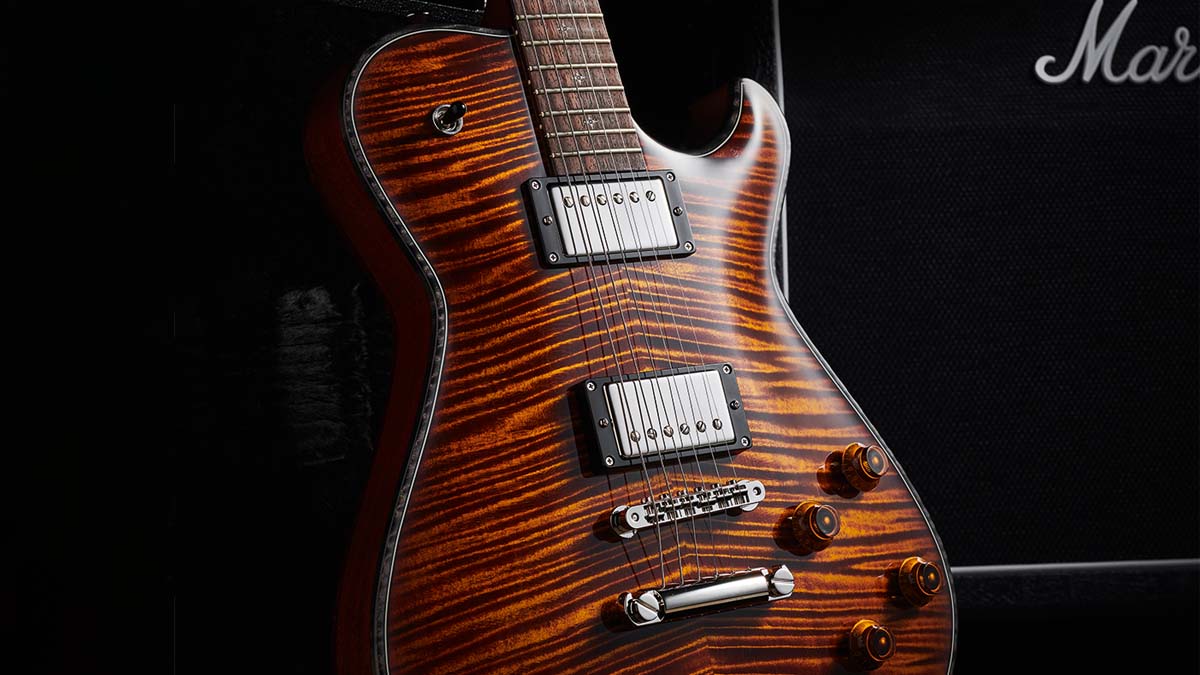Guitar World Verdict
Yes, the Knaggs team will craft you a work of art that you might be afraid to take anywhere near a stage, but if you did we’d pretty much guarantee what you’d hear would be stellar, like this achingly beautiful-sounding single-cut.
Pros
- +
Faultless build that really nails its inspiration’s recipe.
- +
A ‘chunk monster’ with a clear voice and huge depth of sound.
- +
Plenty of options.
Cons
- -
Even at base price, this is serious money.
- -
The Knaggs aesthetic won’t fit everyone.
You can trust Guitar World
There are few top makers who don’t have a single-cut in their ranges and Knaggs is no exception. The Kenai is no stranger to these pages and is a part of the more Gibson-inspired Influence Series. It has been a key model since master guitar maker Joe Knaggs set up on his own in Greensboro, Maryland – a relative stone’s throw from the home of his previous employer, PRS Guitars – and started shipping guitars in early 2010.
But unlike many, the Kenai is very much Joe’s own take on the hallowed Gibson recipe, a very different Tele-meets-Les Paul outline that’s broader across its body and is wedge-shaped in profile with substantial rear-chambering in contrast to the carved top. The co-joined Influence bridge provides a subtly different voice, too.
Very much in the modern ‘boutique’ model, a small staff of hugely experienced (mainly ex-PRS) employees crafts a wide range of guitars, which – like the Kenai – can be custom spec’d to a considerable degree, and has spawned signature models for Steve Stevens, Doug Rapport and, most recently, Eric Steckel.
The Kenai currently starts at $5,425, but add in the whims of those artists and we’re into the super league, the sort of price you’d pay for top-drawer European makers such as Nik Huber, or Seth Baccus here in the UK, for a similar specification.
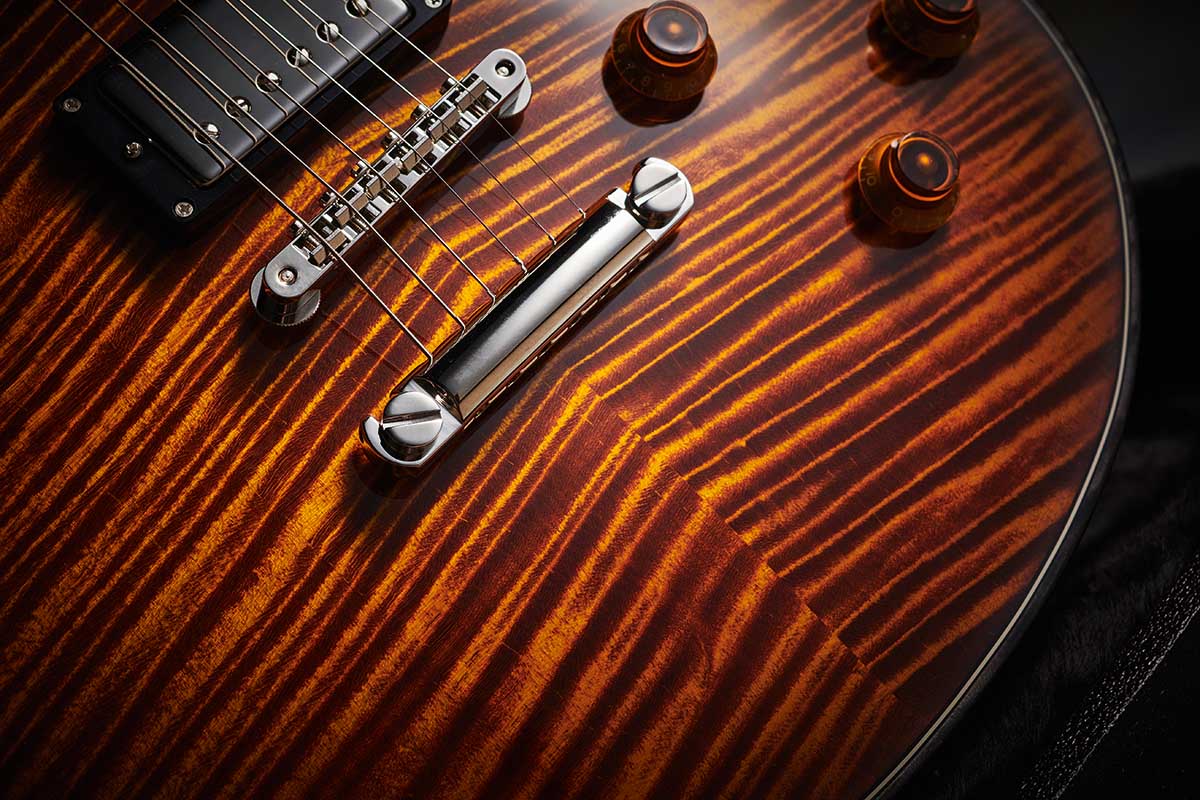
For the record, we did request a ‘basic’ level sample, but something clearly got lost in translation! There is nothing basic about this build, not least the top-grade (Tier 1) bookmatched, striped maple carved top that’s duplicated on the flat back. Not only does it add considerable cost, but it provides a certain opulence to the build referencing – a violin’s figured maple back or that of a high-line archtop or flat-top steel-string. It’s rare to see a back like this on a rock ’n’ roll-aimed electric.
Wedged between these two maple plates, of course, is a one-piece slab of mahogany. And if you’re expecting a boat-anchor weight you’d be way off the mark. At just over 4kgs (just shy of 9lb), it’s no featherweight, but pretty ‘right’ for the non-weight-relieved style.
And despite the dark, vividly contrasted top and back, decoration is demure by some standards. The edge binding, for example, isn’t binding at all; it’s the edge of the maple top that’s stained a dark grey with a black/white/black strip inlaid inside the edge – just like the purfling on a violin.
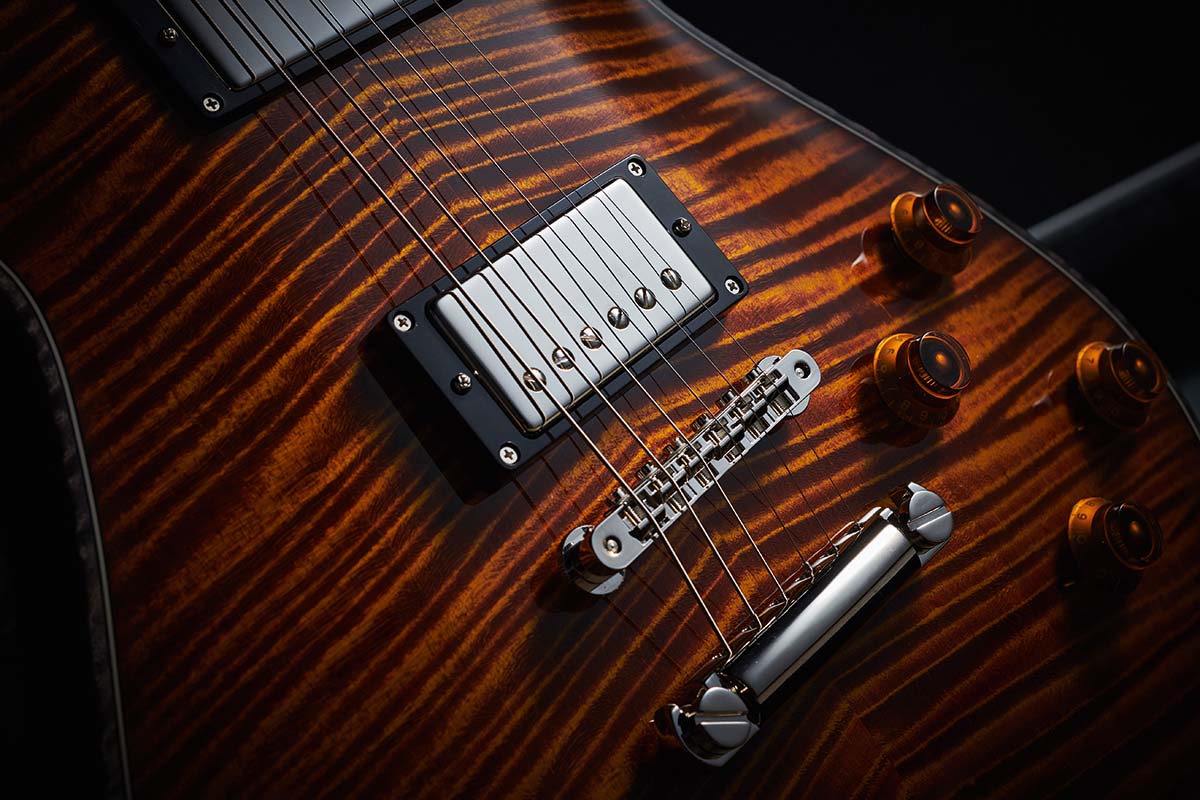
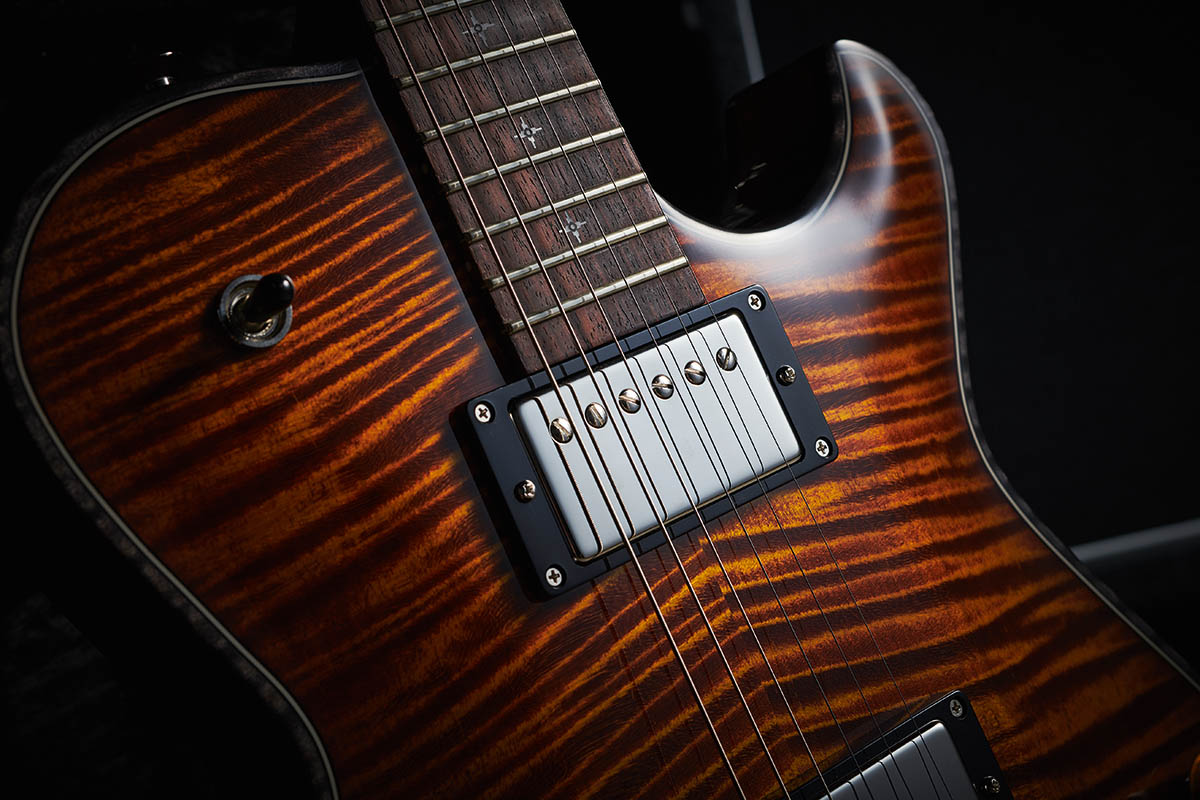
The ‘modern morning star’ inlays that were conceived for this model add subtle sparkle on the face of the unbound Indian rosewood fingerboard. The larger inlay sits under the unshowy brand logo on the ebony-faced headstock, while the outline is a throwback to classic, traditional craft rather than the modernism of Joe’s previous employer’s headstock, for example. Timeless might be a better word.
The full width of the neck glues into the body. Its heel has a boat-bow-like tip and is certainly more traditional than the carved heel designs of Patrick James Eggle’s or Nik Huber’s builds. The top carve is very classic, too, and not overly sculptured.
Like Steve Stevens’ first deviation of the Kenai and instead of Joe’s Influence bridge, the separate bridge and tailpiece here – both locking TonePros parts – revert to standard. Elsewhere, and somewhat ironically for a maker based on the US East Coast, Knaggs is increasingly using the UK-made pickups from Bare Knuckle: the standard Kenai set are Mules. Eric’s choice are from Seymour Duncan’s Custom Shop, reverse-engineered from a well-documented 1960 Les Paul named Candy.
Feel and Sounds
Comparing this with our reference standard Kenai, it feels bigger, chunkier, although at the same time a little more delicate in terms of the neck shape. The Kenai’s body is a little broader than a Les Paul by around 12.5mm (0.5 inches) and is approximately 54mm deep overall with quite a complex wedge shape in profile; there’s a substantial rib-cage contour and edge chamfering on the rear, too.
The Steckel, meanwhile, is the same thickness throughout the body (top carve aside) and has a more Les Paul-like overall depth of just over 57mm. The ‘C w/Slight V’ neck profile is now pretty much default on Knaggs’ Influence guitars, with a depth at the 1st fret of 22mm and just a whisker over 25mm by the 12th. The lower position feels pretty classic C, but as the depth increases so the shoulders are slimmed, creating a very subtle V’d feel. If anything, the Steckel feels a little ‘smaller’ than our own Kenai, though dimensionally they’re identical.
We warmed up our test amps with this writer’s far more lowly, basic-spec Kenai loaded with Seymour Duncan Seth Lover units. And although it’s been a while since we’ve gigged it, even in basic form, Knaggs’ take on the Les Paul comes across as a ’Paul with attitude – not least with the co-joined Influence bridge and thinner body. There’s a little more attack in the upper mids, and it’s leaner in the deep low-end, but with a remarkable loop to the sustain.
The Steckel feels like we’ve gone up a level – or five. It might look pristine, but its voice sounds older, more mature-sounding, aged. It’s not about output, it’s about the woody quality of the voice, the responsiveness, the depth and an almost smear to the note. It has a huge dynamic range, too. Show this the front-end of any cranked Marshall-inspired valve amp and prepare for take-off.
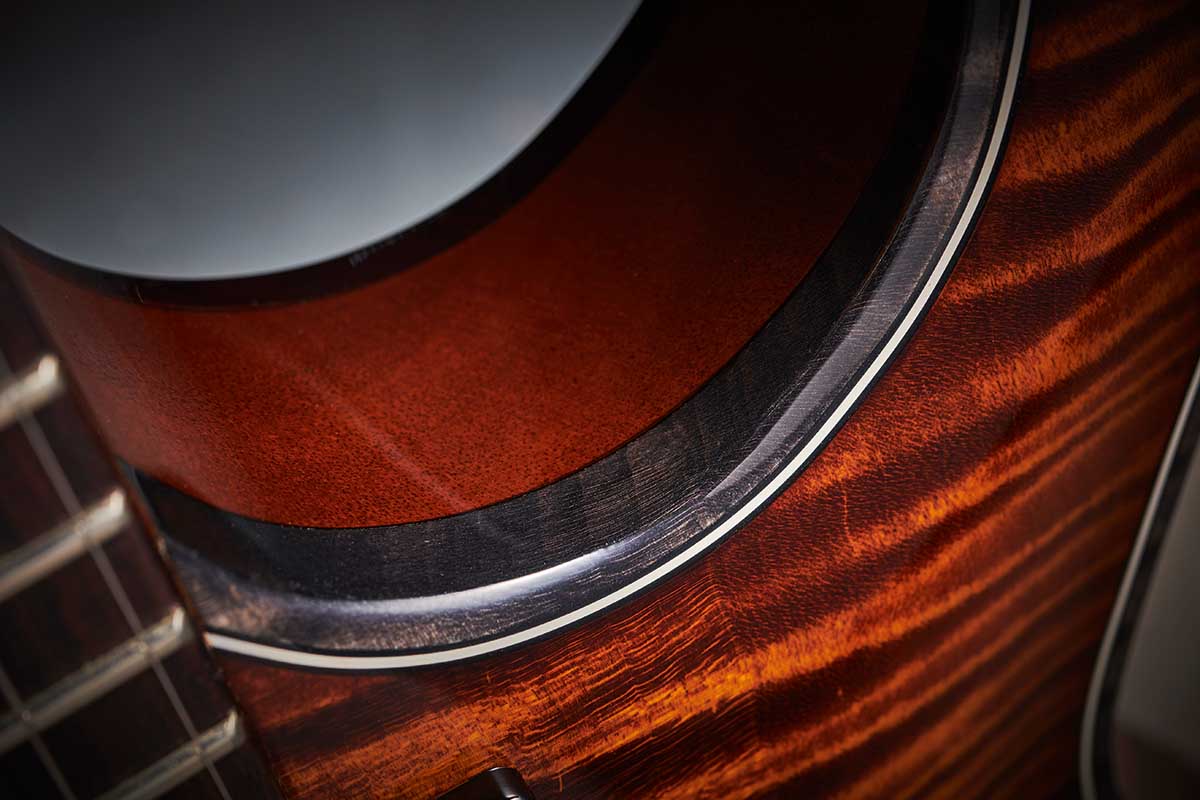
Indeed, if you let the amp do the lifting, with a little help from a pedal or two, the Steckel does sound remarkably clear and unmushy. Dig in and it’s really fiery; pinched harmonics fall off your pick. But lay back and there is a beautifully nuanced smoothness and a depth that would sit in a late-night smoky jazz setting knowing that it’d still scream when you hit the stage at Woodstock.
In either setting, the vintage-style control setup really aids the various voices. It’s not for everyone and the interaction between volume and tone takes a little getting used to. Pull back the treble volume a little then wind down the tone until it’s about to really get dark and there’s a drop in volume, too, a more hollowed, sweet, clear voice. Wind the tone back up and the volume lifts, adding a little extra sizzle to a good valve tone.
It doesn’t look like an old Les Paul, but the sounds are really here: from the clean, bright-edged bridge pickup, through classic rock heaven and a lot more. That’s just the one pickup. The neck here… Well, it’s certainly not overdone or syrupy thick. Again, with the responsive controls, it’s just doing everything we’d expect: a great example of the recipe.
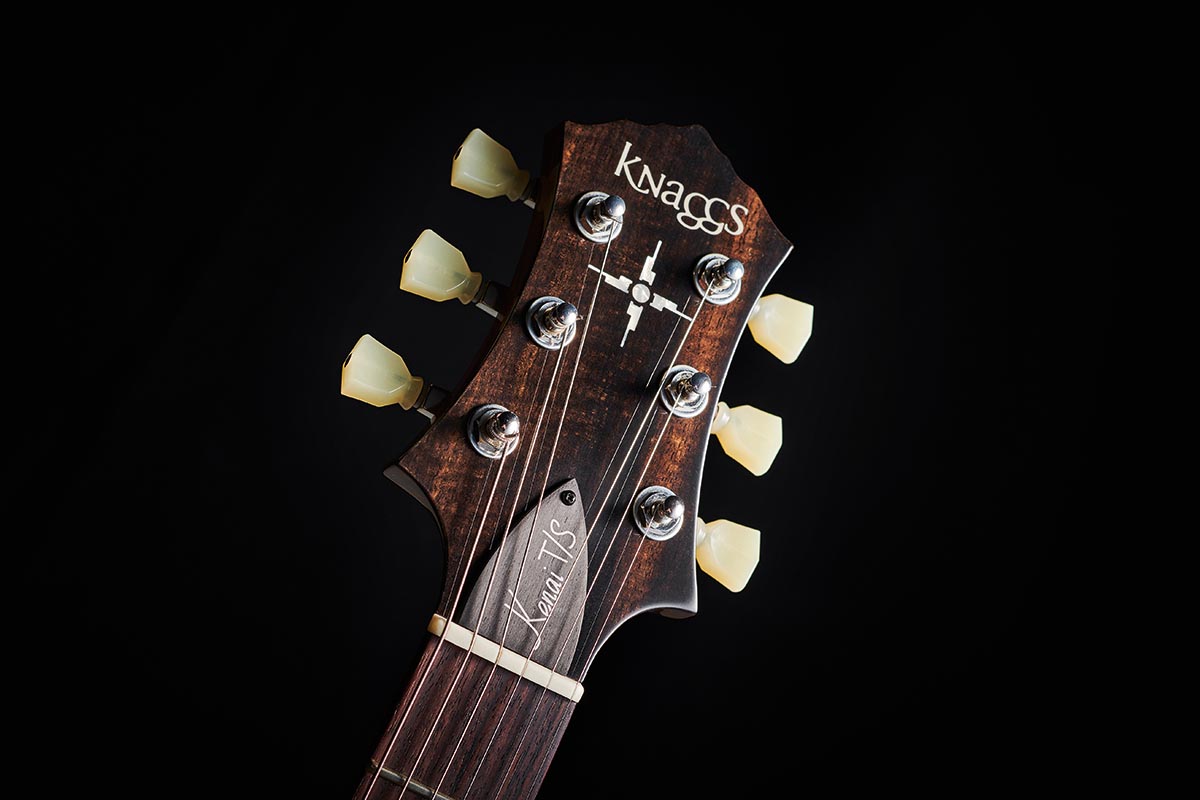
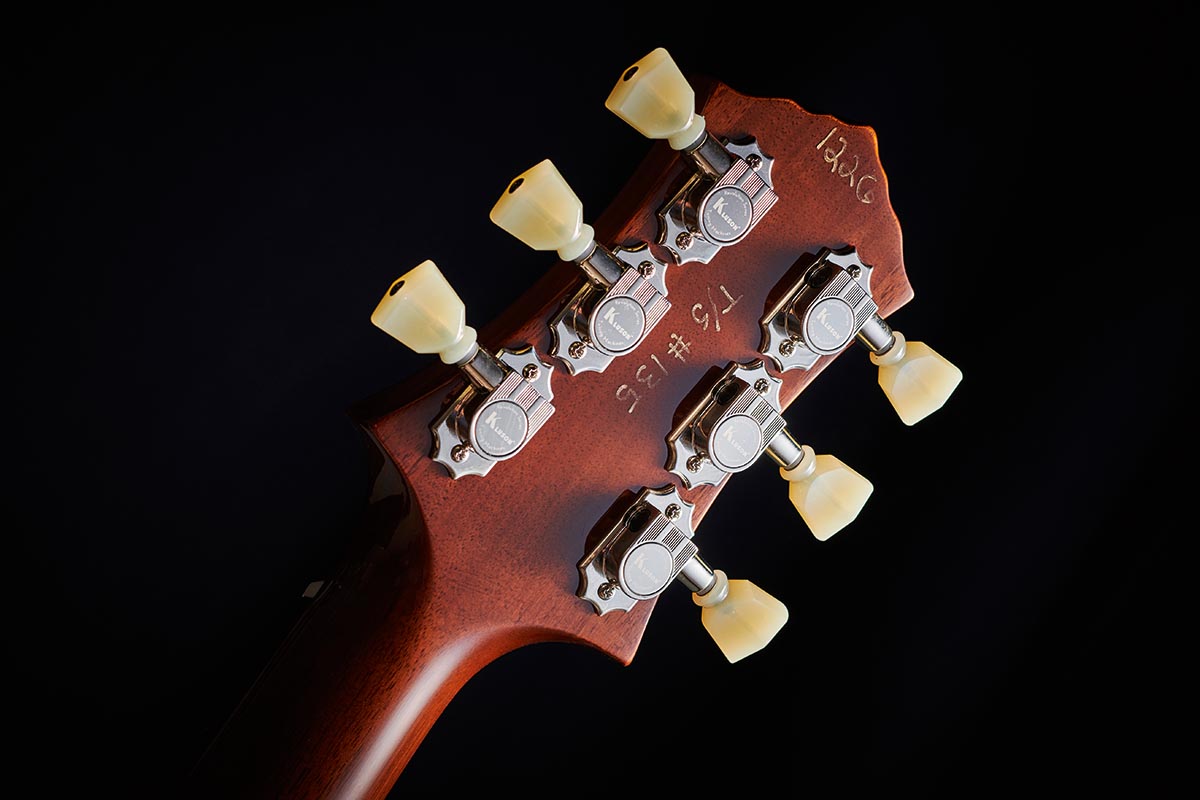
Verdict
You could take a look at the pictures and price here and quickly conclude that this is hardly an everyman guitar. And yet that is the foundation of the Knaggs proposition. Even in basic dress, all the guitars we’re played and gigged just sound exceptional. In its base specification with a plainer top and more classic-coloured satin nitro finish, it just has workhorse written all over it.
This writer has never played a Knaggs guitar that wasn’t 100 per cent fit for purpose as a musical tool. Yes, the Knaggs team will craft you a work of art that you might be afraid to take anywhere near a stage, but if you did we’d pretty much guarantee what you’d hear would be stellar, like this achingly beautiful-sounding single-cut.
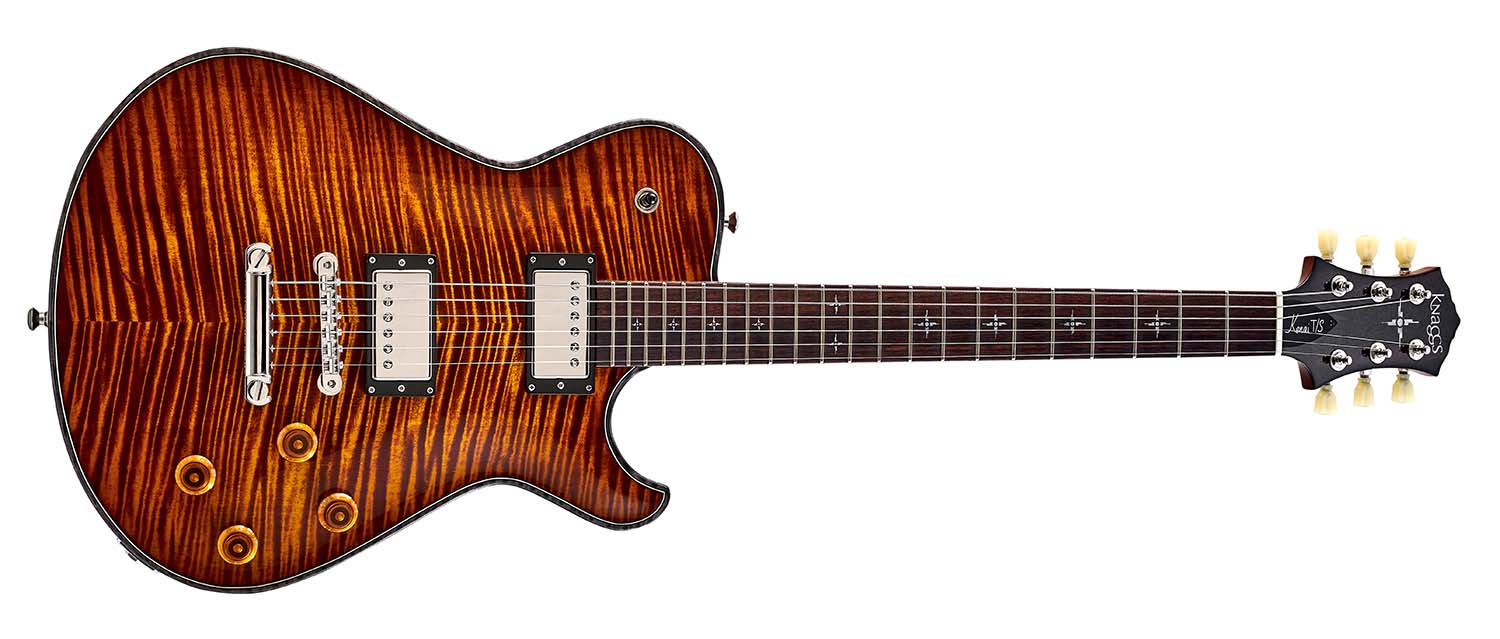
Specs
- PRICE: $7,000 / £5,399 (inc case)
- ORIGIN: USA
- TYPE: Single-cutaway, carved top, solidbody electric
- BODY: 1-piece mahogany with carved Tier 1 maple top and back
- NECK: Mahogany, Knaggs ‘C w/Slight V’ profi le, glued-in
- SCALE LENGTH: 629mm (24.75”)
- NUT/WIDTH: Bone/43.38mm
- FINGERBOARD: East Indian rosewood, modern morning star inlays, 305mm (12”) radius
- FRETS: 22, medium jumbo
- HARDWARE: TonePros tune-o-matic-style bridge and stud tailpiece, Kluson Revolution tuners w/ ‘keystone’ buttons – all nickel-plated
- STRING SPACING, BRIDGE: 51mm
- ELECTRONICS: Seymour Duncan Custom Shop ‘Candy’ covered humbuckers, 3-way toggle pickup selector switch, individual pickup volume and tone control
- WEIGHT (kg/lb): 4.05/8.91
- OPTIONS: The US base price is $7,000, but check with Peach Guitars on the actual price you’d pay and to discuss any options, all of which are listed on the Knaggs website
- RANGE OPTIONS: The Knaggs Kenai, on which the Eric Steckel is based, starts at $5,425. The more Junior/Special-style Kenai-J starts at $3,650; a single P-90 model currently retails for £2,799 at Peach Guitars
- LEFT HANDERS: No
- FINISHES: Aged Scotch/Onyx (as reviewed), large range of opaque and trans colours – all gloss nitrocellulose
- CONTACT: Knaggs

Dave Burrluck is one of the world’s most experienced guitar journalists, who started writing back in the '80s for International Musician and Recording World, co-founded The Guitar Magazine and has been the Gear Reviews Editor of Guitarist magazine for the past two decades. Along the way, Dave has been the sole author of The PRS Guitar Book and The Player's Guide to Guitar Maintenance as well as contributing to numerous other books on the electric guitar. Dave is an active gigging and recording musician and still finds time to make, repair and mod guitars, not least for Guitarist’s The Mod Squad.
“It holds its own purely as a playable guitar. It’s really cool for the traveling musician – you can bring it on a flight and it fits beneath the seat”: Why Steve Stevens put his name to a foldable guitar
“Finely tuned instruments with effortless playability and one of the best vibratos there is”: PRS Standard 24 Satin and S2 Standard 24 Satin review
